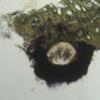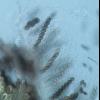
04-11-2025 09:07
Hello.A suspected Hymenoscyphus sprouting on a thi

04-11-2025 12:43
 Edvin Johannesen
Edvin Johannesen
Hi! One more found on old Populus tremula log in O

03-11-2025 21:34
 Edvin Johannesen
Edvin Johannesen
These tiny (0.4-0.5 mm diam.), whitish, short-stip

28-10-2025 15:37
Carl FarmerI'd be grateful for any suggestions for this strik

03-11-2025 16:30
 Hans-Otto Baral
Hans-Otto Baral
Hello I want to ask you if you have found this ye

28-10-2025 19:33
 Nicolas Suberbielle
Nicolas Suberbielle
Bonjour à tous,Je voudrais votre avis sur cette r
Possibly Mycothyridium lividum (to confirm)
Stephen Martin Mifsud,
13-11-2024 08:01
 I am revising some old material again and I have these black semiglobular perithecia on bark of Thymus capitatus, about 0.5 mm in across mostly immersed in the woody bark. The ascospores are 5-7 septate (or having 6-8 compartmnts if that is easier), brownish-black, arranged imbricately or stacked diagonally in the ascus. The Asci are also interesting for having a broad funnel-shaped pore with a lonk neck when not fully mature and I think they are J-ve and bitunicate. Ascospores dextrinoid in KI (?). Paraphyses simple, threadlike, unspecialised, flexuous, 2-3um wide.
I am revising some old material again and I have these black semiglobular perithecia on bark of Thymus capitatus, about 0.5 mm in across mostly immersed in the woody bark. The ascospores are 5-7 septate (or having 6-8 compartmnts if that is easier), brownish-black, arranged imbricately or stacked diagonally in the ascus. The Asci are also interesting for having a broad funnel-shaped pore with a lonk neck when not fully mature and I think they are J-ve and bitunicate. Ascospores dextrinoid in KI (?). Paraphyses simple, threadlike, unspecialised, flexuous, 2-3um wide. Asci size (mean): 150 x 15 um
Ascospores (mean) : 18 x 9 um
I am considering this to be Mycothyridium lividum, already reported from thyme but expert advice is welcomed. There is actually one thing that I am not seeing in my collection - the ascospores of (Myco)Thyridium lividum sometime have diagonal septae - not sure if this is characteristic for the species. Mattirolia sp. is another fungus to consider, (e.g. Mattirolia ohiensis = Teichospora ohiensis Ellis & Everh)...









